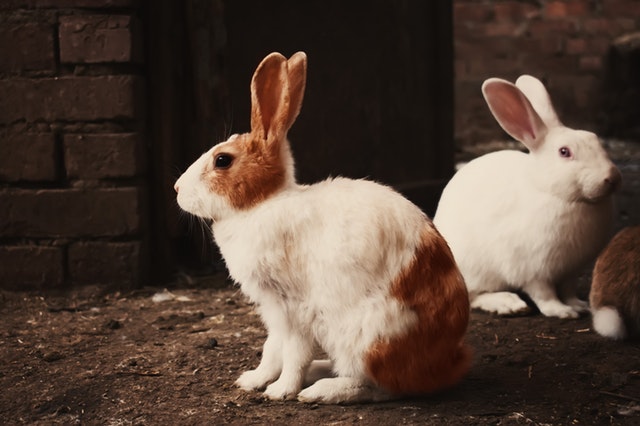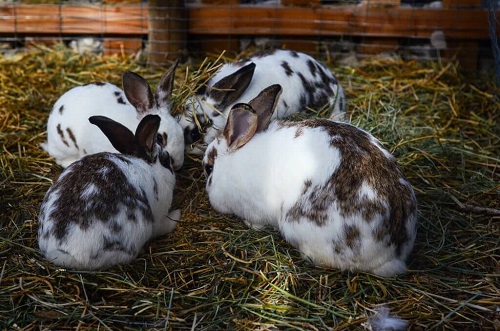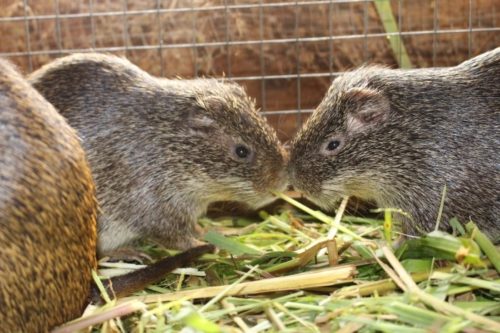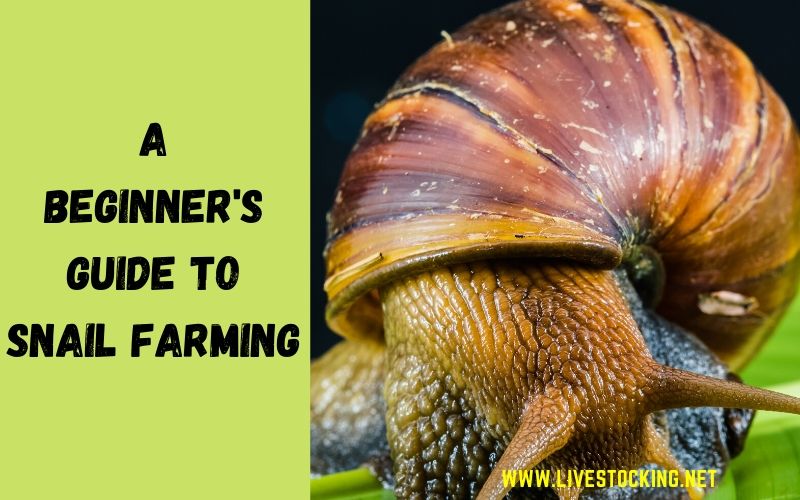When it comes to rabbit production, the New Zealand White and the Californian breeds are the breeds to choose from when rabbit farming because of their high reproduction rate and weight gain factors.
The doe, the female rabbit, becomes reproductive from 4 to 5 months of age, whereas the buck, the male rabbit, is mature after 6 months.
Also Read: How to Build a Local Rabbit Cage or Hutch
For rabbit breeding, take the doe to the buck. The reason for this is that if you take the buck to the doe, being territorial, the buck will spend time sniffing around her cage instead of performing. After mating, remove the doe and place her in her own cage. You can leave the doe in for a repeat performance, the buck is usually ready within 5 minutes, but it’s perhaps best to save the buck for other does.
The gestation period of the doe is 32 days.
After 10 days, you can place the doe back into the buck’s cage for a pregnancy test. If the doe rejects the advances of her suitor then she is likely to be pregnant, otherwise, she may accept the buck again for another try.
When she’s getting ready to build a nest, she pulls out her own fur to help with the lining of the nest. Place her in a nest box. This can be 38 cm (15 inches) x 38 cm (15 inches) and is useful for keeping the newly born kits with their mother in a protective environment.
The doe normally has between 5 to 9 kits. Given that a doe has eight teats, if she has more than 8 kits, it may be best to give some of her kits to a doe that has less.
Kits are blind when born, and weigh 100 g. They roughly double their weight in 7 days. and soon start jumping out of the next box. Once the kits have been weaned and start to eat rabbit feed in the form of solids, they should be placed in a separate cage.
These kits are ready for slaughter within 90 days at 2.8 to 3 kg of weight.
Also Read: How To Start a Profitable Rabbit Farming Business
The doe is most receptive to the buck again after days 5 and 6 OR after day 21. Depending on your rabbit production regime, at 5 days, she can then be mated in days 1, 37, 74,111, 148, 185, 222,259,296 and 333. Or taking the regime at 21 days, she can be mated in days 1, 54, 107, 160, 213, 266, 319. Either way a normal productivity rate for a doe is 40 kits per year.




Love your write up on various aspects of livestockings . I will be interacting with you on this platform for assistance I am planning to set up a goat and sheep ranch . Thanks.
Thank you!
Great efforts.
Thanks
Happy with your rightup on rabbits. I am into rabbit rearing but my animals do not weigh up to 2.8 or 3kg at 90 days. Can you help me with a feed formula to ensure that they gain the required weight within 90 days.